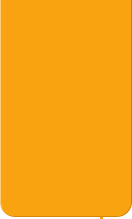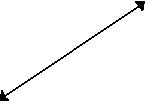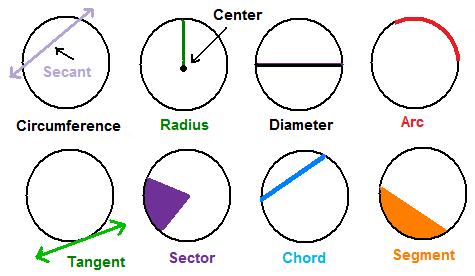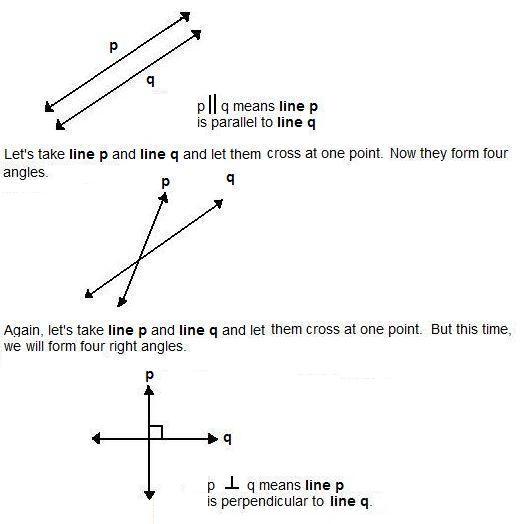Plane - A flat surface.
Polygons - Closed geometric figures with straight lines.
Triangle - A polygon with three sides.
Equilateral triangle - A triangle with three sides and three anges that are equal.
The sum of any three angles of a triangle is 180 degrees.
Isosceles triangle - A triangle with only two sides and two inside angles opposite of each other that are equal.
Scalene triangle - A triangle with no sides or inside angles that are equal.
Quadrilateral - A polygon with four sides and four angles.
Parallelogram - A quadrilateral with opposite sides that are equal and opposite angles that are equal.
Square - A quadrilateral with four equal sides and four angles that form a right angle.
Rectangle - A quadrilateral with four sides and four angles that form a right angle.
Pentagon - A polygon with five sides.
Octagon - A polygon with eight sides.
Circle - A plane figure with all of the points the same distance away from the center point.
The complete distance around a circle is 360 degrees. One fourth of this distance creates a 90 degree angle. One half of 360 is 180, which is a straight line.
Notice that point A and point B are located on line p. We can call this line AB or line p.
Lines can be described as:
Horizontal line
Vertical line
Diagonal line
Now that we covered how lines can be described, we can use these descriptions
to show how they can be used to form angles and how they can relate in different ways.
If we were to label one line p and another line q and place both lines side by side, equal distance apart, we could say that line p and line q are parallel to each other.




Some Helpful Tools
Math: Introduction to Geometry - Tutorial
Terms and Definitions
This section will cover the fundamentals of geometry and how geometry applies to everyday life.

Solids
Solids are figures that have three-dimensions. The faces of a solid are called the sides, top, and bottom.
The difference between a polygon and a solid is that polygons are flat like a piece of paper.
Solids are like the shapes of objects you might find around your house.
A cube is a solid whose faces are squares. Remember that the square has four sides that are equal and four corners that form right angles.
For example:
an ice cube
A rectangular is a solid whose faces are rectangular. All of the corners are
right angles. The size of the rectangular solid is determined by its height, length,
and width.
For example:
a shoe box
A cylinder is a solid figure. The top and bottom of the cylinder are circles. The
size of the cylinder is determined by its height and radius.
For example:
a size D battery
circumference - The distance around the circle.
Secant - A line that intersects two points of a curve.
Radius - The distance from the center to any point on the circumference of the circle.
Center - The point at the origin of the circle.
Diameter - A line that has its end points on the circumference of the circle and runs
through the center of the circle.
Arc - A curved section that lies on the circumference of the circle.
Tangent - A straight line that touches the circumference of a circle at one point.
Sector - A region that is formed by two radii and an arc.
Chord - A line segment whose end points lie on the circle.
Segment - A segment is the region formed by a chord and an arc.
Point - A location in space.
There are infinite points in space. If we were referring to a specific point, we could label the point with a letter from the alphabet.
Line segment - A line that begins and ends with end points.
Ray - A line that begins and ends with end points.
Geometric Figures

Parts of a Circle

Line - A collection of points in a straight formation.
A line goes on and on indefinitely.
We cannot draw such a line on our paper since paper has only a limited amount of space. But we can show that a line goes on and on by putting an arrow at both ends of the line.
